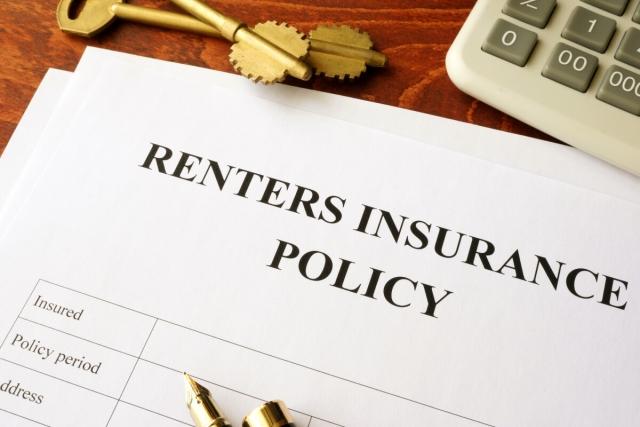Download our free Renters Insurance Checklist
You’ve just unpacked the last box in your new home. The excitement is real—new furniture to shop for, groceries to stock, and friends to invite over. The last thing on your mind? Renters insurance. After all, who wants to think about disasters during such a happy time? But here’s the thing: renters insurance is an affordable safety net that can save you from financial stress when life takes an unexpected turn.
So, how much coverage do you really need? This practical guide will help to assess your needs with inventory tips and strategies for estimating the value of your personal property, so you can protect your home with confidence.
- The benefits of having renters insurance
- How to calculate the amount of renters insurance you need
- Policy limits and deductibles
- Frequently asked questions
The Benefits of Having Renters Insurance
First and foremost, renters insurance provides peace of mind when life takes an unexpected turn. Here are some tangible benefits it offers:
1. Personal property coverage in case of loss
Think about everything in your home, from your laptop and TV to your furniture, wardrobe, and even your pets. Personal property coverage means if your items get damaged or stolen due to events like fire, theft of your possessions, or certain types of water damage, your policy will help cover the cost of replacement.
2. Liability protection against accidents
Renters insurance liability coverage steps in if someone gets hurt in your rented home or if you accidentally cause damage to someone else’s property. For instance, if a guest slips on a wet floor in your apartment and needs medical attention, liability coverage can help with their medical bills. Similarly, if an accidental kitchen fire ends up damaging a neighbor’s property, your policy can help cover the costs. It’s a smart way to protect yourself from potentially expensive legal or repair bills.
3. Replacement cost of your items
Replacement cost coverage ensures you can replace your belongings with new items at today’s prices, rather than settling for their depreciated value. For example, if your five-year-old television is stolen, actual cash value (ACV) coverage may only reimburse you for what the TV is currently worth, which will be considerably less than what you originally paid for the TV—even if you have the receipt to prove what you originally paid. On the other hand, replacement cost value (RCV) coverage allows you to buy a replacement TV at today’s prices.
4. Coverage for unforeseen living expenses
Renters insurance often covers extra costs if your home becomes temporarily uninhabitable. Imagine a scenario where a major plumbing issue floods your apartment, forcing you to find temporary housing. Your policy can help cover the cost of a hotel, meals, and other necessary expenses while repairs are being made. This benefit ensures that even during a challenging time, you’re not scrambling to handle unexpected financial burdens.
How to Calculate the Amount of Renters Insurance Coverage You Need
Protecting your belongings with the right amount of renter's insurance doesn’t have to be complicated, but it does require a bit of time and effort to ensure you’re fully covered. Follow these four simple steps to determine how much coverage you need.
1. Take an inventory of your belongings
Start by listing everything you own. Go room by room and record items such as furniture, electronics, kitchen appliances, clothing, and décor. Don’t overlook smaller items like jewelry, shoes, or books, as their combined value can add up quickly. Use a spreadsheet or a home inventory app to keep things organized. Include photos of your items to prove ownership, document the condition, and expedite your insurance claim.
2. Estimate replacement costs
Assign an approximate replacement cost to each item on your list. Think of what it would cost to buy a similar new item at today’s prices. For example, if your sofa will cost $800 to replace, write that down. Once you’ve completed the inventory, add everything up to get the total replacement cost of your belongings. This total forms the basis for your personal property coverage.
3. Consider liability coverage
Liability coverage protects you if someone gets injured in your home or if you accidentally damage someone else’s property. Start with the standard coverage amount of $100,000, then assess your lifestyle. If you frequently entertain guests, own pets, or have savings you want to protect, consider increasing this limit for extra peace of mind.
4. Factor in additional living expenses
Think about what it would cost if you couldn’t use your rental due to events like a fire or flood. Include estimated costs for temporary housing, meals, and other living needs. Your coverage should be sufficient to cover several months of these expenses. For example, if temporary housing (such as a hotel) in your area costs $2,000 per month, make sure to factor that into your estimate.
Take Policy Limits and Deductibles Into Consideration
Policy limits and deductibles are key elements of any renters insurance plan and understanding them is essential to tailoring a policy that fits your needs.
1. Policy limits
A policy limit refers to the maximum dollar amount your insurance company will pay for covered losses. For example, if your policy has a $25,000 limit for personal property, that’s the most your insurer will reimburse, even if your losses exceed that amount.
2. Deductibles
A deductible is the amount you pay out of pocket before your insurance coverage kicks in. For example, if you have a $500 deductible and experience $2,000 worth of damage, your insurer will cover $1,500 while you cover the rest.
Balancing these two factors is crucial to building a policy that protects you adequately without straining your budget. Keep in mind the higher the policy limit, the higher your monthly insurance premium, and the higher your deductible, the lower your monthly insurance premium.
Ultimately, deciding how much renters insurance is right for you comes down to evaluating your individual needs and lifestyle. There is no one-size-fits-all policy. Simply copying a friend’s policy could result in paying a higher premium than necessary or leaving yourself inadequately covered for emergencies. Take the time to assess your individual situation and explore policies that match your needs. The peace of mind that comes with knowing you’re covered is well worth it!
Frequently Asked Questions About Renters Insurance Coverage
1. What does rental insurance cover?
Typical coverage includes personal belongings, liability protection, and additional living expenses. Renters can also opt for replacement value coverage, which allows you to recoup undepreciated replacement cost of your items. There may be items that a policy does not cover, so it is wise to consult an insurance agent before signing a written agreement.
2. How much will it cost for $100,000 in renters insurance?
Insurance cost varies by state, coverage level, and deductible amount. Each of these factors needs to be taken into account. To find out how much your monthly cost would be, check with an insurance provider in your state.
3. Is renters insurance really worth it?
In a word, yes. Most people don’t have the cash on hand to cover the potential loss of their personal possessions. Having insurance helps ease the burden of a major financial setback.
4. What happens to my renters insurance if I move?
Just as car insurance doesn’t transfer to a new vehicle, renter's insurance does not transfer to a new apartment. You’ll need to cancel the policy for your old place and secure a new one for your new apartment—even if you’re moving within the same community!
5. How can I lower my monthly premium?
Choosing a higher deductible can significantly reduce your monthly payments, though it means paying more out of pocket if you file a claim. This option is ideal for those who are confident in their ability to manage larger upfront costs in exchange for long-term savings on premiums.
Bundling your renters insurance with other policies, like auto insurance, may earn you a multi-policy discount. It can save you money and simplify policy management by keeping all your coverage under one provider. Plus, some insurers offer added perks or enhanced coverage options as an incentive for bundling, making it a win-win for your budget and convenience.
Security features, such as installing an alarm or video cameras, may qualify you for rate reductions. (Be sure to obtain written approval from your landlord before making any modifications!) Having deadbolt locks and smoke detectors could also lead to more favorable terms or coverage options in the long run.
Maintaining a strong credit score is another key factor, as insurers often use credit-based scores to help set rates. A higher credit score suggests you're more likely to make payments on time, which can result in lower premiums.






